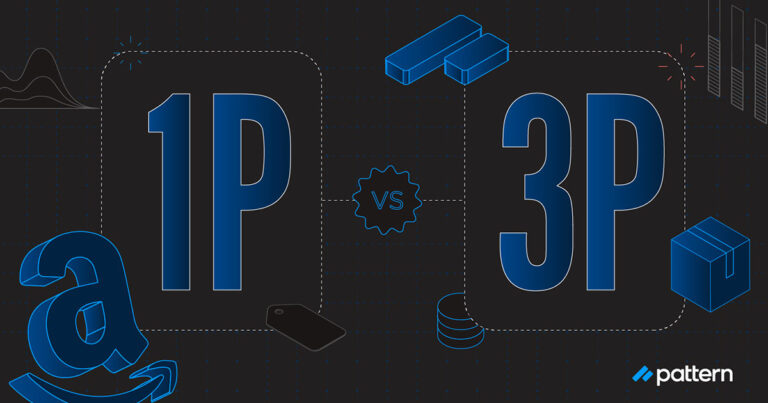COVID-19 has completely changed our world for the time being, perhaps forever, and that includes the world of ecommerce. To help you navigate the impacts of coronavirus on ecommerce, here are the 6 most impactful ecommerce trends that have resulted from COVID-19.
1. Image is everything
Since most people are stuck indoors, unable to shop like they used to, customers aren’t able to physically try on things like clothes and shoes, inspect their tomatoes before buying them, feel blankets for softness, and so on. That means high-quality images are more important than ever before.
“People are expanding the items that they’re comfortable buying online, so images need to be up to par so people understand what they’re buying,” says Newel Cobb, a Senior Brand Manager at Pattern. “You’re replacing touch.”
Another important factor for brands to consider is that many of their shoppers are on a phone, or a tablet, rather than a desktop, scrolling through while binge-watching Parks and Rec.
“Because of that, a customer might have to scroll two or three times to learn about the product, so most people will just look at the images,” Cobb says. “Ninety percent of people look at all the images before they decide to purchase a product.”
So not only is it important to have high-quality images, but it’s important to have enough high-quality images that a customer wondering how something like a couch or a TV will fit in their living room can get a pretty good idea.
2. Shipping
Customers have gotten used to 2-3 day shipping with Amazon Prime. However, as items like toilet paper and hand sanitizer continue to be in high demand, customers after “non-essential” items, like shampoo and conditioner, are told to expect delays of a week or more when it comes to receiving items. According to the Cleveland Research Center, some 1P and 3P sellers of “non-essential” items are having their Amazon Standard Identification Numbers (ASIN) suppressed or even removed to make way for essential items.
Because of Amazon’s struggle to keep up with shipping demands, brands may want to consider alternative shipping methods. The CRC reports brands set up for Direct Fulfillment on Amazon are better set up to navigate these challenges. Other options sellers on Amazon can consider include Fulfillment by Merchant, where they upload the amount of inventory available to Amazon and ship directly from their own warehouse. It’s important to remember, however, that shipping services like UPS and FedEx are experiencing their own delays.
Sellers who are successful in doing their own fulfillment can upgrade to Seller Fulfilled Prime, which allows them to still use Prime branding. In the past, according to Cobb, this hasn’t been too popular because it’s more cost-effective to ship with Amazon, but as Amazon has changed algorithm priorities, it’s worth it to get your items to customers quickly any way you can. If you have multiple warehouses, use them wisely—don’t ship something from Maine to California if you have a warehouse in Texas.
But above all, Cobb cautions, remember this is temporary and Amazon will eventually change their algorithm again to boost brands shipping with Amazon fulfillment. “Be agile,” he advises.
3. Search trends
Search trends have changed and are continuing to change because people are staying home. Marketplace Pulse ranked top search terms throughout the month of March, and among coronavirus-inspired items like face masks and disinfectant spray are items like puzzles for adults, board games, yoga mats, and dumbbell sets.
Now that people are staying inside to avoid the virus, they’re looking for ways to entertain themselves, learn new skills, and stay fit without going to the gym. While that’s great news for companies and brands selling these sorts of items, many brands are suffering.
Stackline rounded up the top 100 ecommerce categories experiencing growth and the top 100 experiencing a decline. Categories experiencing a decline during COVID-19 include pretty much any kind of clothing you can think of, luggage, party supplies, school and office supplies—anything a person or family might need if they were to ever leave their house (which, as we’ve established, most people are not).
Of course, we can’t go without mentioning grocery items. Groceries have seen the most notable shift when it comes to ecommerce, with Americans adopting online grocery shopping faster than ever. The Cleveland Research Company’s report on COVID-19’s consumer impact from April 7, 2020, found nearly 50% of consumers had used a grocery delivery app in the previous two weeks.
This is likely the shopping trend that will see the most staying power once the pandemic is over—the CRC reported that 90% of consumers using Amazon Fresh or Prime expect to continue using it after the pandemic ends.
4. What companies selling “non-essentials” are doing
Stores selling “non-essential” items have closed their brick-and-mortar locations, which has led companies like Nike and Macy’s to offer online deals instead. According to CNBC, many brands are even throwing in free shipping where they didn’t offer it before and expanding return windows.
It’s a bit of a gamble still, since like we mentioned before, most shoppers aren’t really looking for a new pair of kicks to rock in quarantine. There’s also the problem of people looking to save their money in a time of economic uncertainty, making people less likely to splurge on apparel and accessories.
It’s a weird time for retailers, who are offering the kinds of deals typically only seen around holidays, as they try to offload inventory and make some profit. The future of many brick-and-mortar stores is uncertain, with at least one analyst suggesting this could be a record year for permanent closures for stores.
“Every business owner is trying to capture online success right now, and they’re doing that by lowering prices or offering different deals,” Cobb says.
A word of caution for brands thinking of trying this strategy: this situation temporary, so beware of dropping prices too extravagantly—or after this is over, and you return to normal prices, you may find someone has bought 200 units of your product and is selling them to undercut your brand.
5. Trajectory of projected ecom sales
This may be the most important takeaway: Ecommerce is DEFINITELY going to outpace all previous projections and benefit in the long run. Cobb says it has to do with learning new habits.
“A lot of people are learning the process of buying groceries online, for example, because they have to—but they might find that it’s more convenient for them and stick with it. And then they’re going to tell their family and friends that’s what they’re doing,” Cobb says.
“There’s also an element of trust that has been built by brands like Walmart, which has invested in making a good, trustworthy option,” Cobb continued. “When this is over, customers may go to the store, but at the end of the day a lot of consumers have learned a new skill—how to buy online at the best price, from the best source, etc.”
There will also likely be some fallout where people prefer to avoid crowds for the next couple of years, which will only continue ecommerce popularity, and perhaps continue to see people learning how to shop online if they didn’t at first.
6. Lipstick effect
Okay, briefly—for the duration of this section—forget everything we’ve said about non-essential items and declining categories to learn about a little trend that represents the total opposite: the Lipstick Effect.
As defined by Investopedia, the Lipstick Effect is when consumers still spend money on small luxury items, or “indulgences,” during economic downturns or when they personally have little cash, for example, a premium lipstick. For this reason, Investopedia states, companies that benefit from this effect tend to be resilient, even during economic downturns.
The idea is that consumers can buy something, whether it be a luxury beauty item, a fast-casual meal, or a movie that lets them forget for a little while about the stress and struggle of the economy. There isn’t a ton of research behind this theory, but it still could be good news for brands that aren’t seeing the same kinds of sales as bread machines—there is a light at the end of the tunnel.
For more information on ecommerce trends and how your brand can grow and optimize during this unprecedented time, contact Pattern through the form below.





